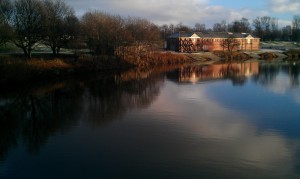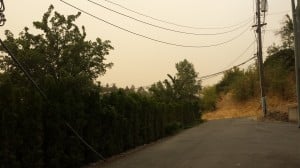 Fiction has been a way for me to explore ideas without the boundaries of ordinary reality since I was a child. I don’t remember when I wrote my first short story, but I do remember clearly the day that I wrote my first poem. I was 6. I was outside playing with friends down the street when the rain started to fall. I returned home somewhat slowly, daydreaming as I went about the life of ants. By the time I walked in the front door, I went straight to the kitchen table to grab one of my mother’s yellow legal pads and a pencil to write the poem I’d thought up as I walked. The poem was my way to connect with the world of the ants and how they faced the rain, through a combination of direct observation and my vivid imagination. That method of dual experience continues to serve me well as an adult as I create stories and poetry about the world in a way that holds both the literal and an imaginative figure of reality.
Fiction has been a way for me to explore ideas without the boundaries of ordinary reality since I was a child. I don’t remember when I wrote my first short story, but I do remember clearly the day that I wrote my first poem. I was 6. I was outside playing with friends down the street when the rain started to fall. I returned home somewhat slowly, daydreaming as I went about the life of ants. By the time I walked in the front door, I went straight to the kitchen table to grab one of my mother’s yellow legal pads and a pencil to write the poem I’d thought up as I walked. The poem was my way to connect with the world of the ants and how they faced the rain, through a combination of direct observation and my vivid imagination. That method of dual experience continues to serve me well as an adult as I create stories and poetry about the world in a way that holds both the literal and an imaginative figure of reality.
A story about a magic event may be true, or it may be True. Perhaps a boy did turn into a rabbit and then a fish and then a bird. Or perhaps the Truth in the story isn’t in the question of whether he did those magical acts, but in the metaphor underlying the acts. Then again, these two cases are not mutually exclusive. From the shamanic perspective we could say that the story is entirely true and exists fully as reality in some realm. Stories are a type of shamanic journey that we can share together as a community. One of the advantages of the shared journey is the fact that we can then process the journey together afterward in more detail, often drawing many more layers of Truth from the fiction.
Some of my favorite stories by other authors are ones that describe real places in detail with an added overlay of the fantastic. Two Neil Gaiman books spring immediately to mind, Neverwhere and Good Omens. I read both of those books in the year after I moved to a town just outside of London. The stories are wonderful on their own, for sure, but combined with my experiences in and around London, they held additional layers for me. In Neverwhere, for example, Gaiman’s London exists in spacetime in such a way that if you fall through the cracks you can be in a London which is all of London’s history simultaneously. This is such an amazing, deep way to look at a place: Not just the place right now, but all of its spacetime bubble existing simultaneously.
Over the last few years I’ve written quite a few short stories that are set firmly in a place, or more to the point, where the place is one of the main characters. The imaginary overlay I create is often meant as a tool for commentary on events or societal dynamics, but every time I re-read those stories out loud to a new audience I realize that there is more to the overlay than satire or lightly veiled critique. The stories are journeys that I take as I write, and only really unpack as I read them.
This week, my first ebook went live for Kindle. Next week the physical book comes out. In three months, both versions will be available on non-Amazon outlets. The Imaginary City and Other Stories is a compilation of stories about places I have been in the last few years. Israel, the American Pacific Northwest and Glasgow, Scotland. It’s a romp through magical worlds just outside of ordinary reality, but it’s also a travelog of real places. If you like that sort of thing, but don’t want to get the book, you can just head over to my creative blog where some of the stories are available to read for free.
How do you feel about connecting with a place through fiction?
















